Ryse: Son of Rome throws you into a brutal world of war and revenge. As Marius, a newly recruited legionnaire, you witness your family’s slaughter and embark on a blood-soaked quest for vengeance – from the streets of Rome to the misty battlefields of Britannia.
Ryse: Son of Rome is a third person combat game where you play as a Roman soldier learning to become a leader. With gladius and shield, you will slice your way through enemies and lead your troops to victory over the barbarians and other enemies.
It is a re-imagining of the ancient Roman occupation of Britannia, a story of revenge, and a tale of gods and heroes. It’s a fun adventure in which you will have to adapt and react to the many challenging opponents the game pits you against.
Disclaimer
I used to work for Crytek Shanghai, though I had no involvement in the development of this game.
Combat
Most of the gameplay in Ryse involves controlling Marius fighting multiple opponents. There are two basic attacks: gladius and shield bash. For the simplest opponents you can simply slash at them with your gladius until they die, but opponents with shields require you to break their guard with a bash attack.
At first, it feels like you can get through the game by button mashing attacks and shield bashes. But the game introduces more moves that bring some challenge to the enemies you will encounter.
To defend against attacks you can block or roll. Blocking requires precise timing, but it can break an opponents guard allowing you to counterattack. Rolling gets you out of the way of an attack, and if done right can put you behind an opponent and open them to attack.
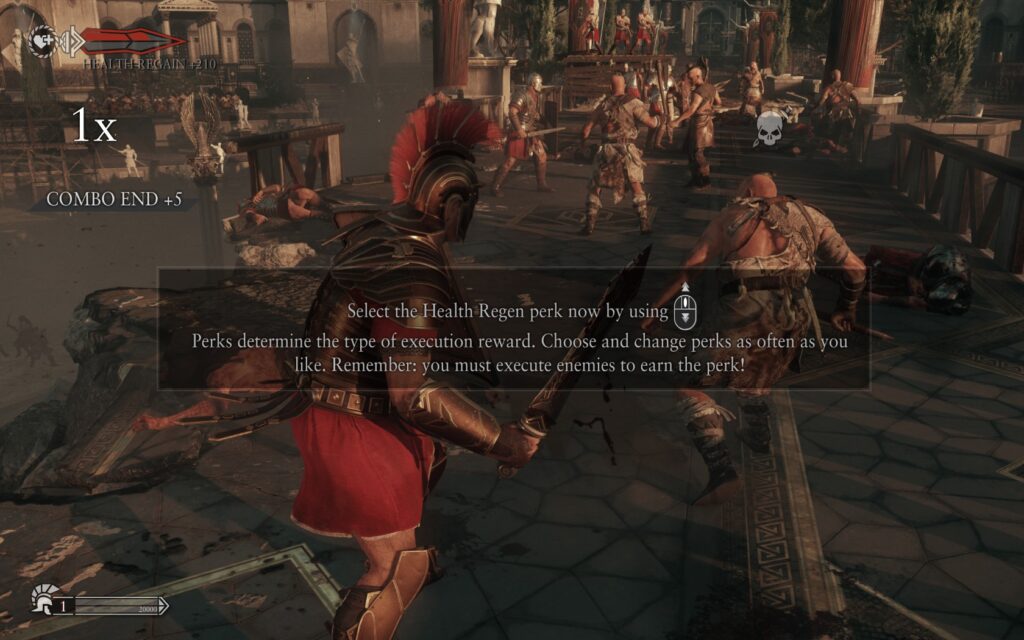
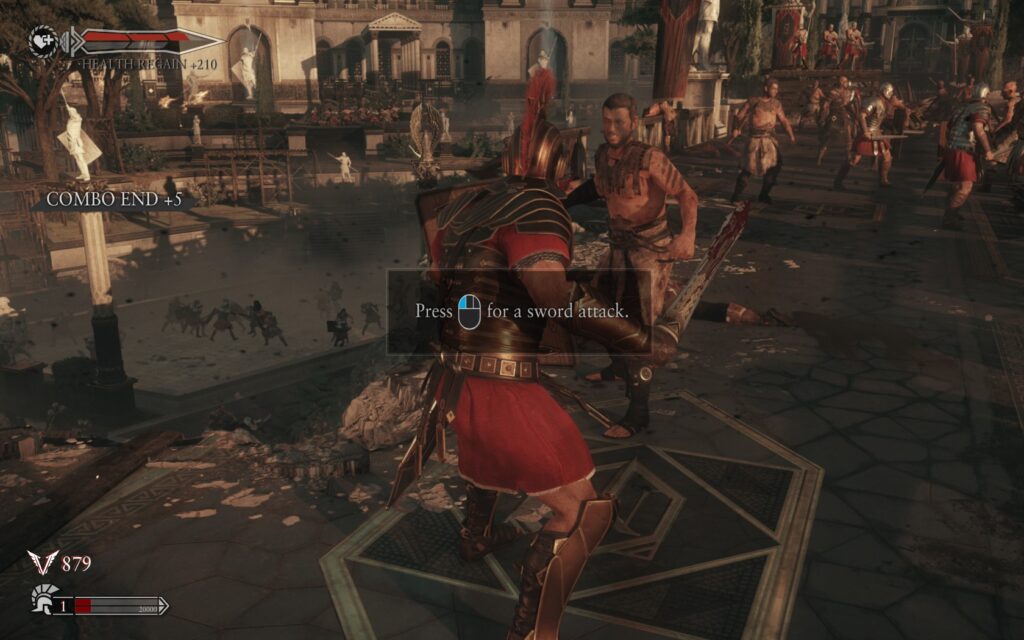
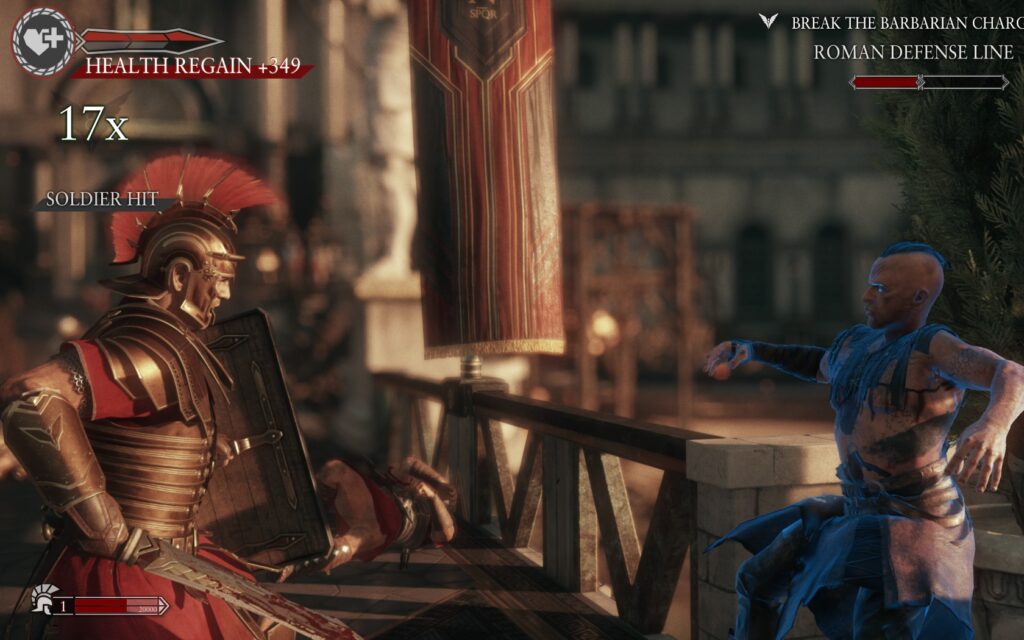
If you hold down the attack buttons you can do a power attack. These attacks take longer to perform, but if they land they will do more damage or open an opponents guard for longer. Enemies use these power attacks too, forcing you to time your rolls and blocks with precision. Timing your blocks is key in Ryse, as the game becomes about countering attacks and looking for openings to fight back.
You can also use Focus to slow down time. When you are focused your enemies will be slowed, allowing you to take out one or more before time speeds back up. When a fight gets too tough, you can fall back on your Focus, slowing down time and giving you space to breathe before you return to the fight. This ability makes you feel powerful, as you cut down barbarian after barbarian.
Execution
When an enemy is weakened enough, you can perform an execution. These attacks are quick-time-events that allow you to regain health, focus, or gain extra damage or experience. They will always result in an enemy kill, but hitting the right attacks at the right moment will increase your bonuses. This is the most important move in the game, as you will need it to restore health or to pass certain sections of the game.
Executions can be fun to watch, as you see Marius slowly take down an enemy, cutting off their arms, slashing their throats, or dropping an armoured knee into their skull. They add a little bit of cinematic flair to every fight.
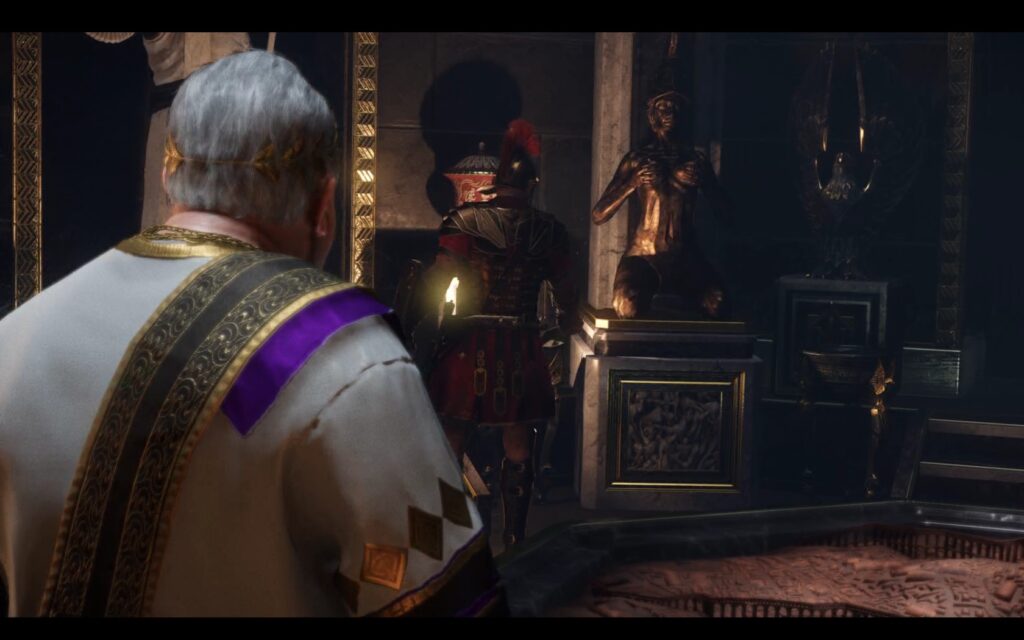
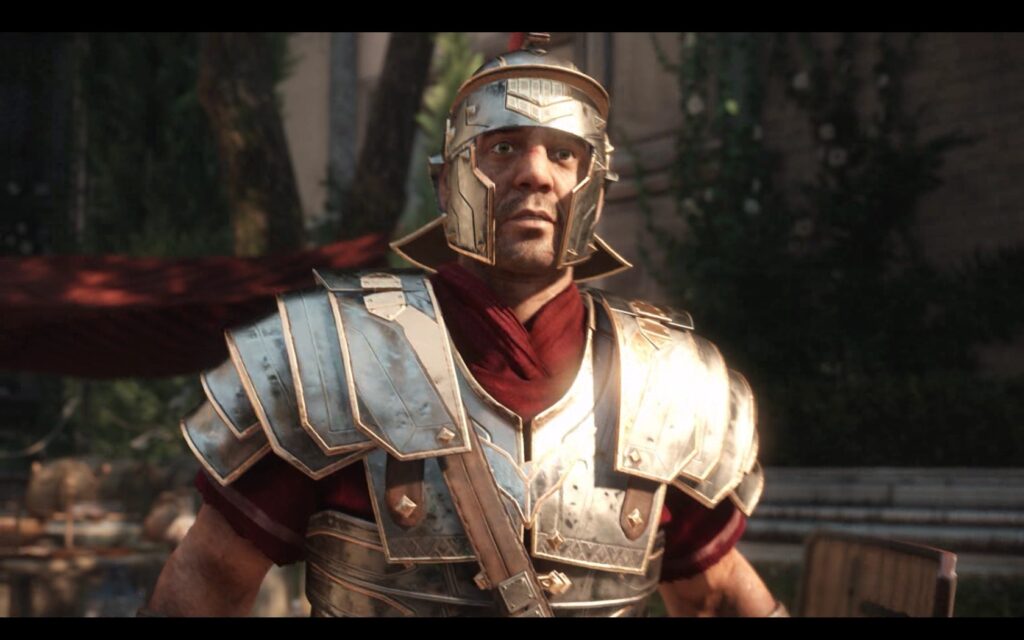
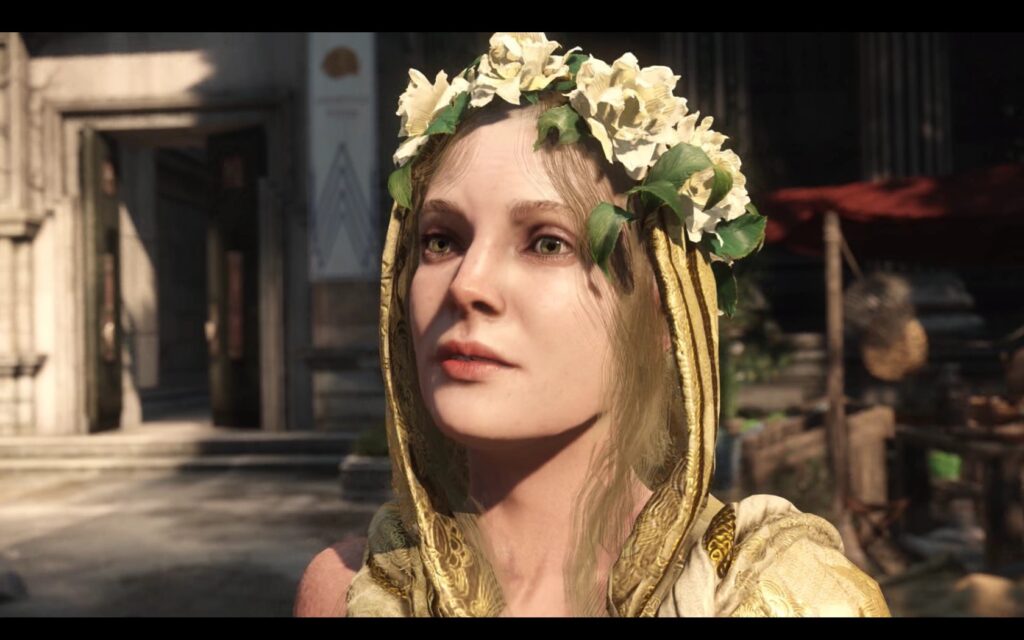
Unfortunately, they start to get a little tedious and repetitive later in the game. Fights are constantly paused for these quick time events where you slowly perform an animation that you will have seen a dozen times by the end of the game. While optional, executions become necessary when low on health or seeking extra experience. The repetition slows down combat, making fights feel more stop-and-start than they should.
Still, I did enjoy the mechanic of double executions, where you could kill two opponents at once. It was fun to try and make sure you had two opponents at low health and start an execution at just the right moment.
These finishers tie into the game’s progression system, which gives extra rewards to players for well-timed executions and sustained combat performance.
Progress
Experience and Valour are gained as you kill enemies, and bonus experience can be gained through combos: multiple attacks made in a row without taking damage. Experience levels up Marius, unlocking new abilities that can be bought with Valour. These abilities can increase Marius’s health, focus, rate of experience gain and so on. Valour can also be spent unlocking new executions, which gives you new animations and different bonuses depending on the execution.
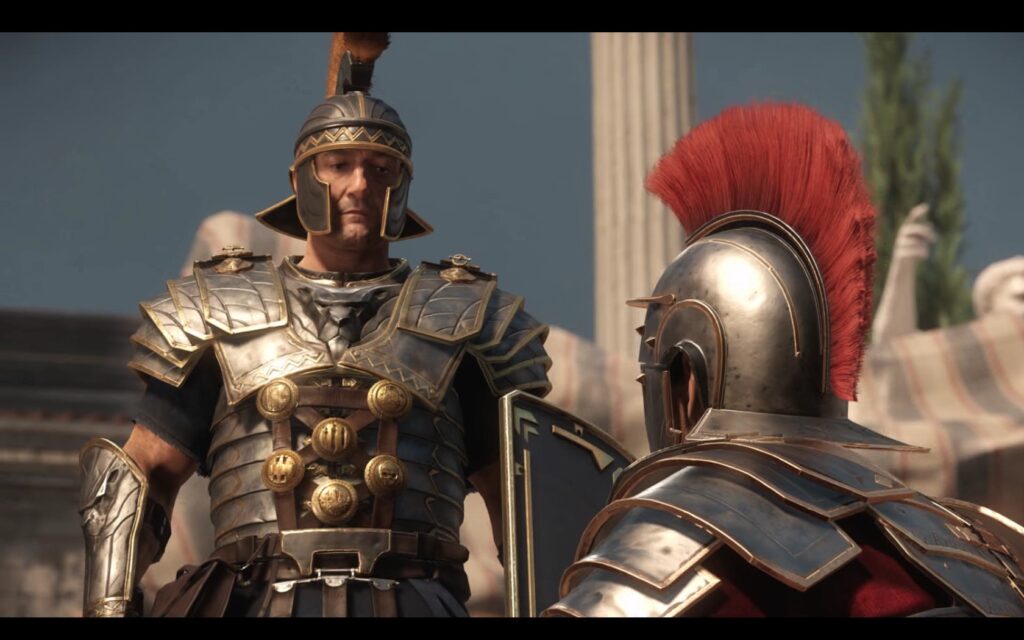
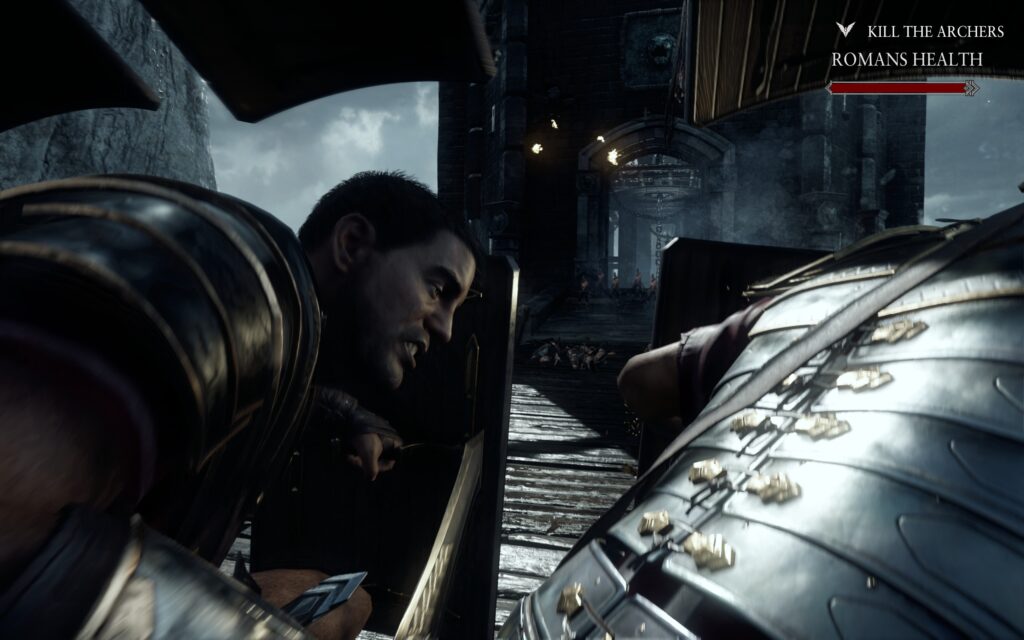
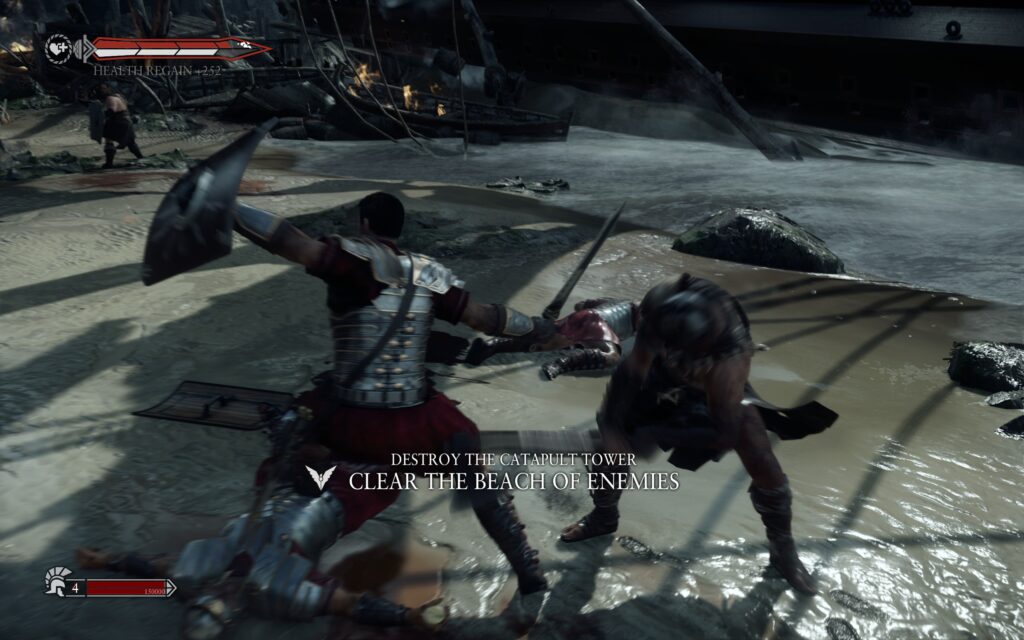
I found advancement to be a little superficial. Numbers go up, which is fine, but the game tends to hide a lot of these numbers, making the later enemies feel about as tough as the earlier enemies. That isn’t to say later battles aren’t more challenging, just that it doesn’t feel like improving your character actually does anything to ease that challenge. It doesn’t make you want to stop playing, but it’s easy to forget that the system is there.
Leadership
There is more than just one on one combat in Ryse, however. Marius is rising up the ranks of the Roman Army, and learning to become a leader. And as a leader, he must lead.
There are many sequences in Ryse where Marius will direct his troops. When archers attack the Legionnaires from afar, they will form a shield line, and you will control when they advance, or when they form a shield line.
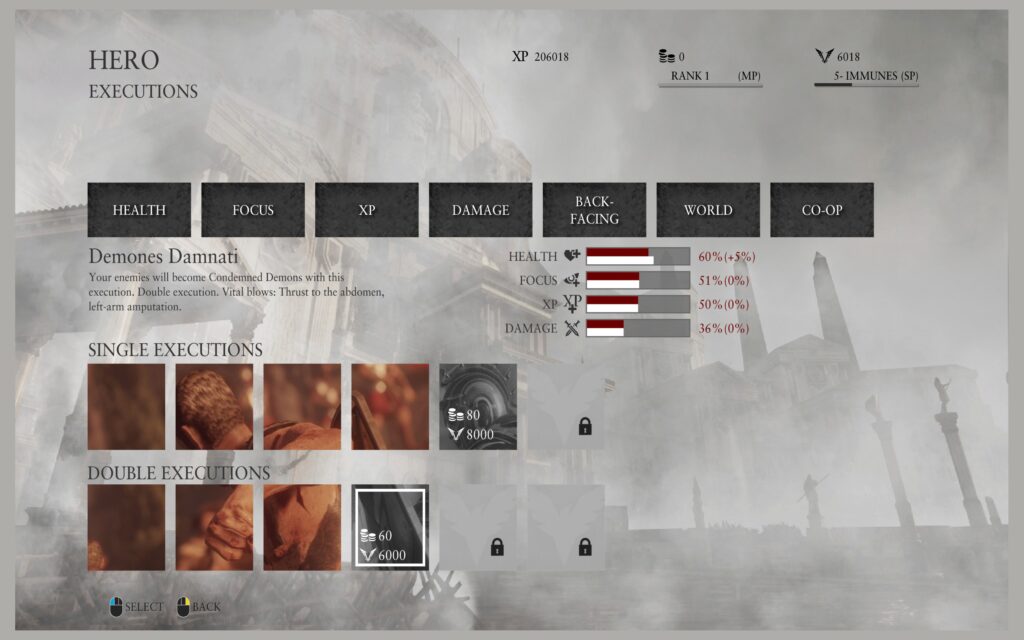
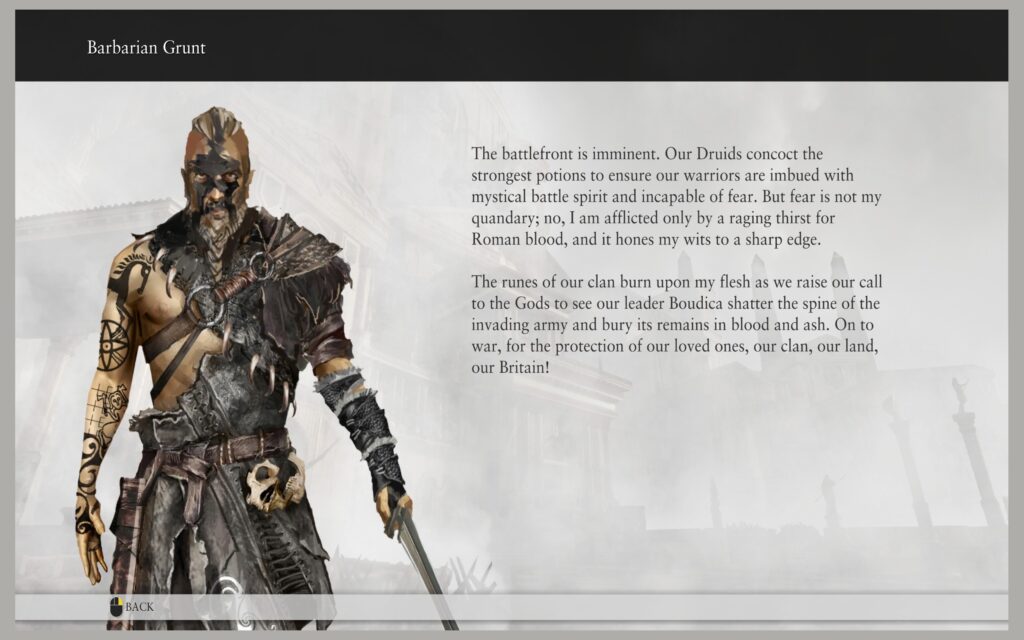
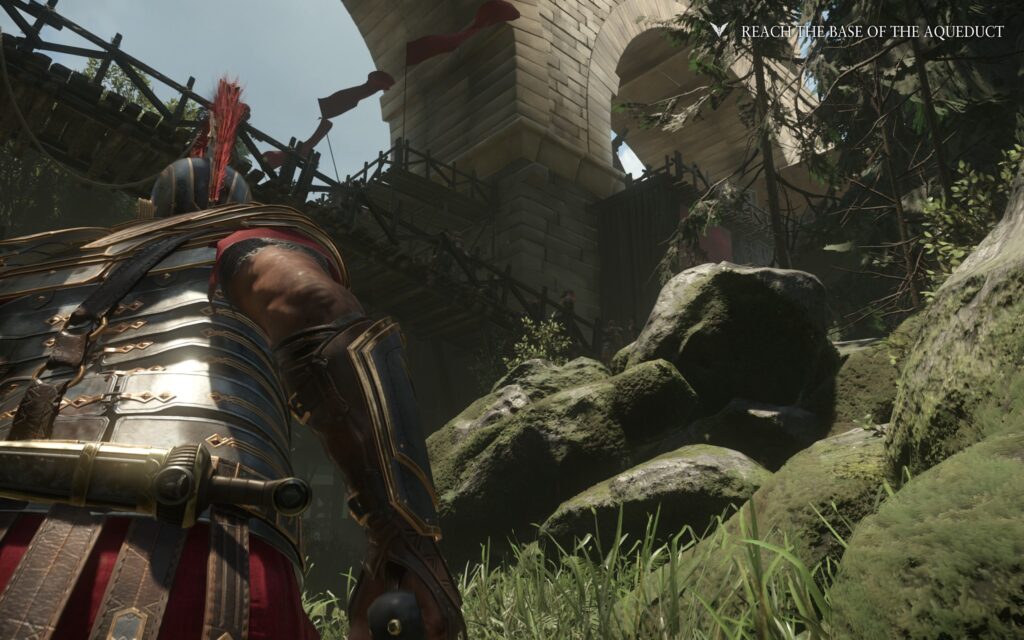
Later versions of this sequence allow you to hurl piliums (a Roman javelin) back at the archers, though you need to be closer to them in order to do this. Timing becomes even more important here, as preparing to throw leaves your squad open to attack.
These sequences strike a balance between excitement and brevity, adding variety without overstaying their welcome. When arrows rain down, your men raise their shields in unison. The sound of impacts, the shouted commands, the moment of hesitation before breaking formation – it’s moments like these that make you feel like more than just a warrior, but a leader.
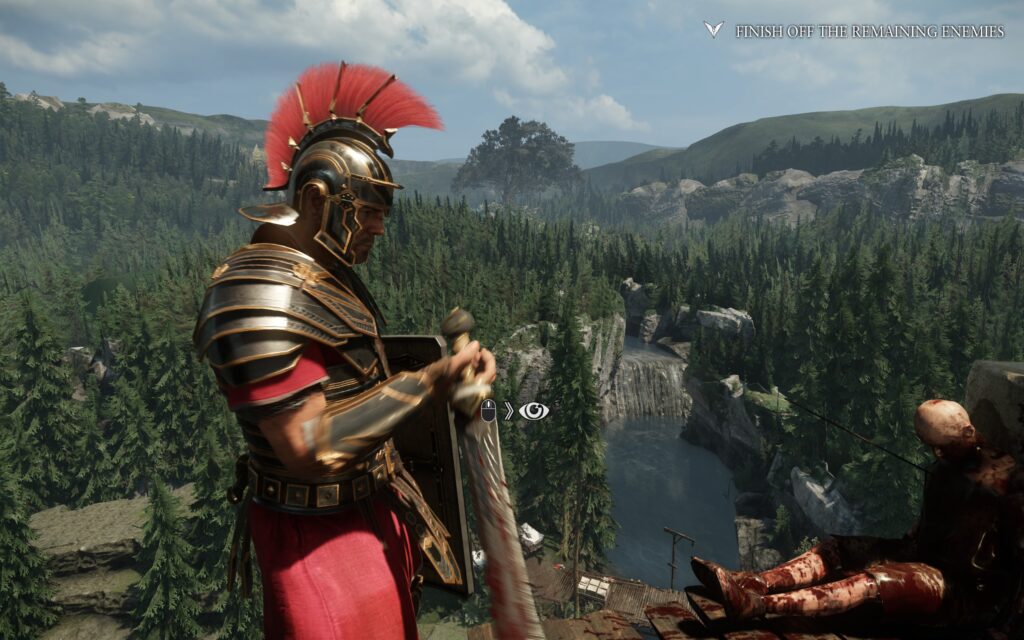
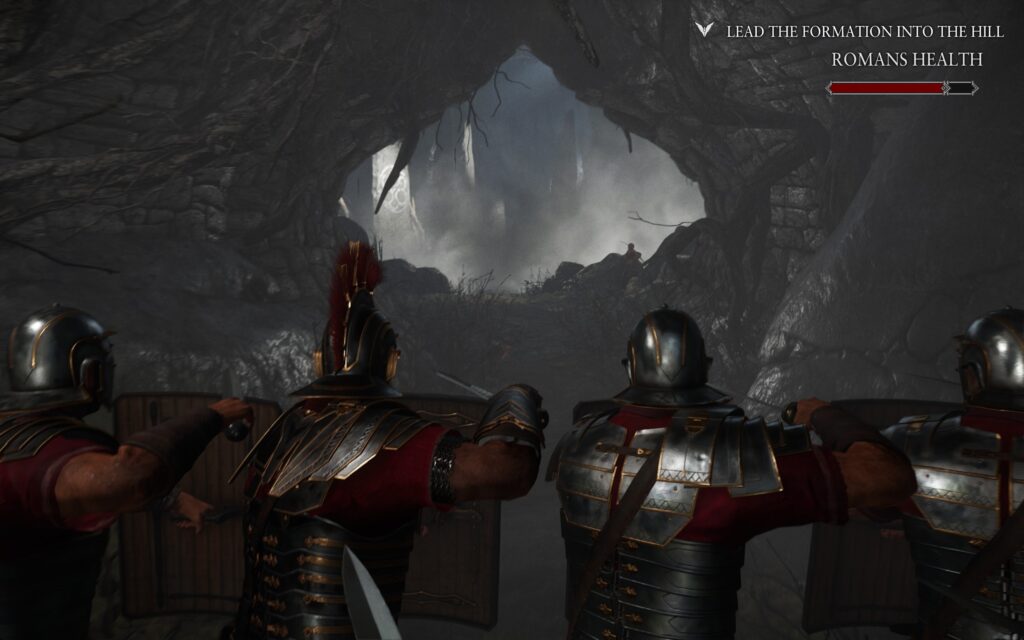

These parts are effective, as you can feel their effects in the fight that follows. Without support, the fights are tougher, but your troops last longer, giving you more time to fight. With support the fight is easier, but if all your troops fall the battle is lost.
These are the parts of the game that truly make you feel like you are fighting as part of an ancient army, rather than as an individual warrior. You support your troops and they support you. It helps you be immersed in the world of Ancient Rome, which is also supported by the game’s excellent graphics. While some might think they feel a little scripted, they are fun diversions from the constant combat as you progress through the game.
Observation
This is a Crytek game, so of course it looks gorgeous. The game is more of a fantasy setting than an historical one, but the design of every building, every piece of armour, every weapon, and of the flora and fauna still make you feel like you are in Ancient Rome.
The barbarians of Britannia contrast the bright Roman soldiers, wearing leathers and skulls, rather than plate armour and helmets, and wielding wooden shields, scythes, and flaming clubs rather than the uniform gladius and tower shields.
The moment I first stepped onto Britannian soil, shrouded in mist with the eerie cries of barbarians in the distance, I felt a real sense of dread. The barbarians, though grounded as the human warriors they are, seem like demons rising out of the mist. Ryse doesn’t just show Rome, it makes you feel it.
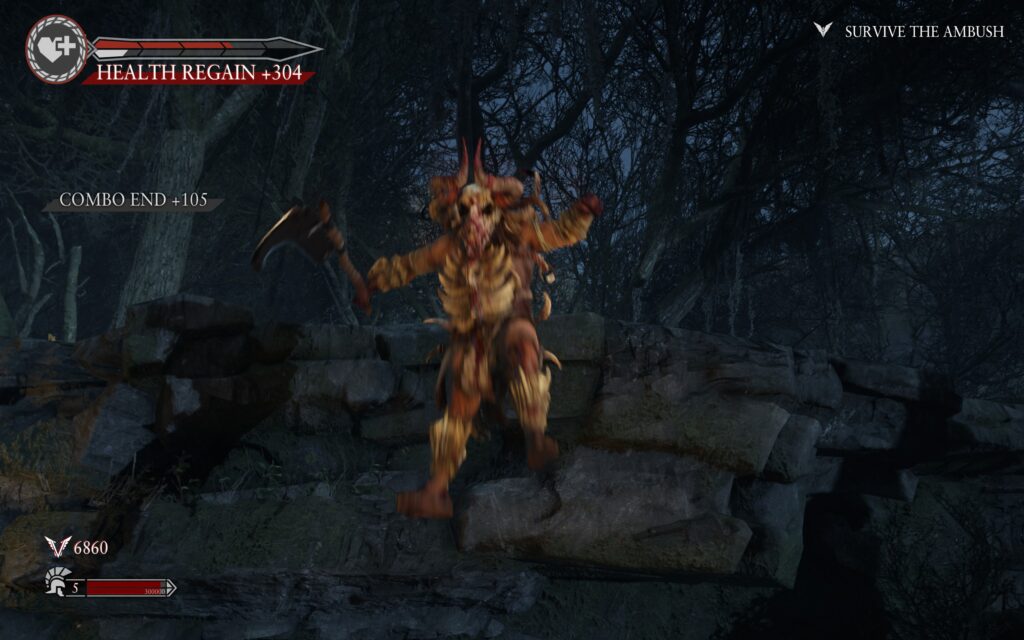
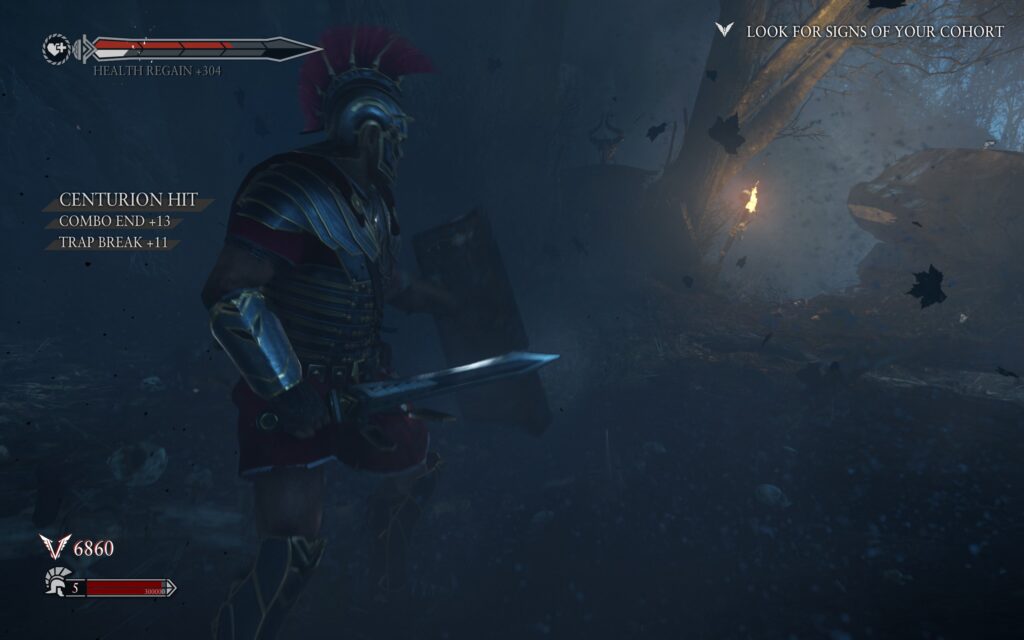
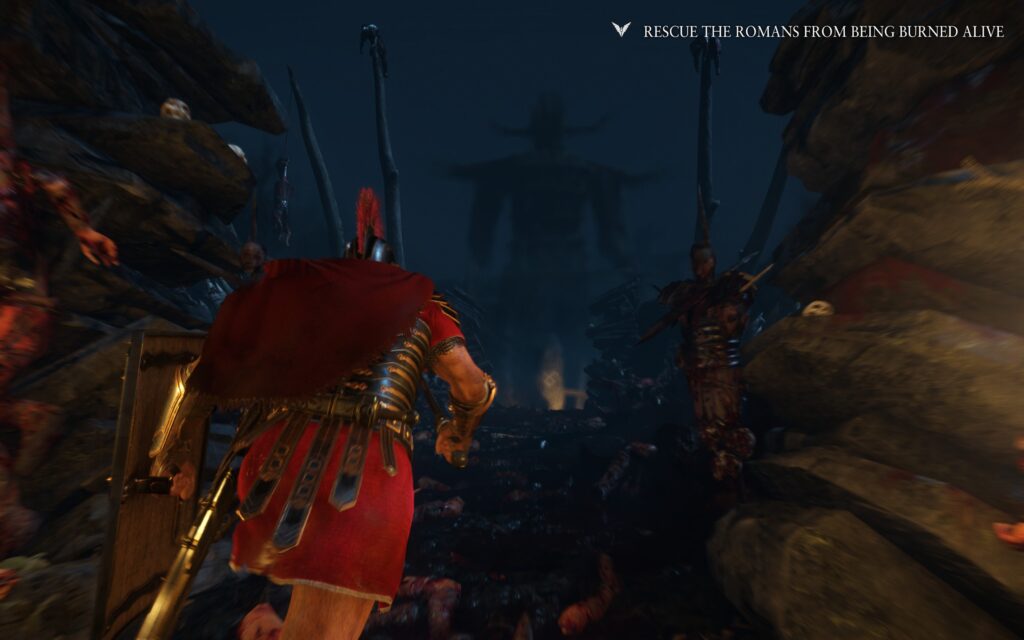
The sound of weapons clashing, shields blocking blows, and armour moving as troops run really adds to the weight of everything a Roman soldier carries. The animations complement the sound well, and you can almost feel the physical force of arrows as they strike a line of shields.
Borislav Slavov and Peter Antovszki bring us a soundtrack that enhances the atmosphere, with heroic riffs and epic music that sounds like it could accompany a reading of the Iliad. The music can bring that feeling of a military force pushing forward, or that fear and anxiety as the horror of a situation sinks in.
Story
The game’s story is a simple story of revenge. It has its twists and turns, but these prove to be rather predictable. This isn’t really a problem, however, as the story’s purpose is to drive the gameplay, and it serves it well.
The world building is well done, down to the graffiti in the early levels giving hints as to the zeitgeist at the time. While it is set in a historical period, the game takes a lot of liberties with historical events. The developers weren’t aiming for accuracy, rather they just wanted to create something fun that feels like Rome. In that, they succeeded.

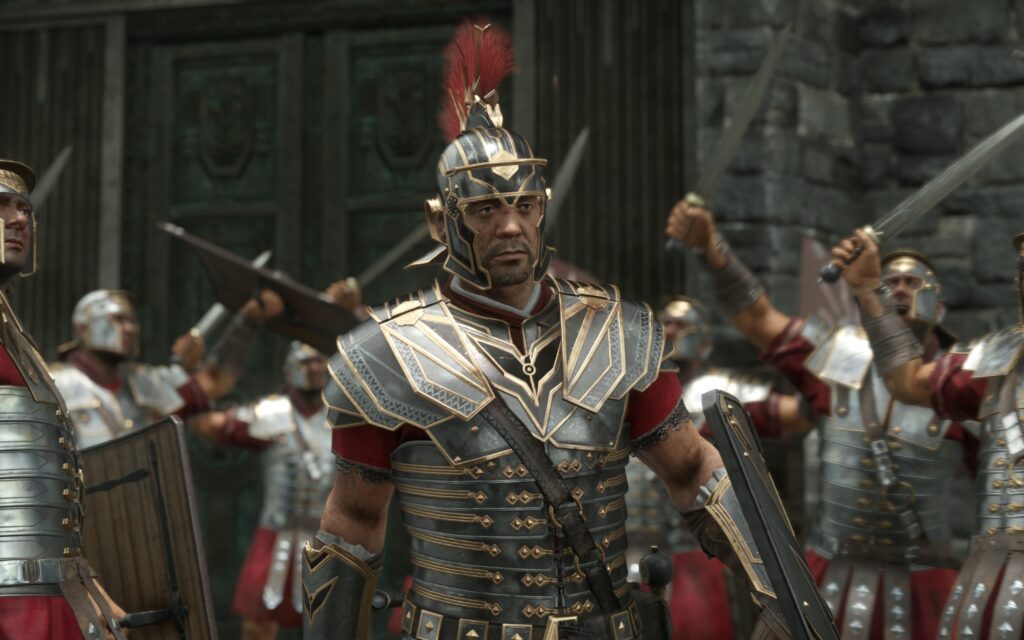
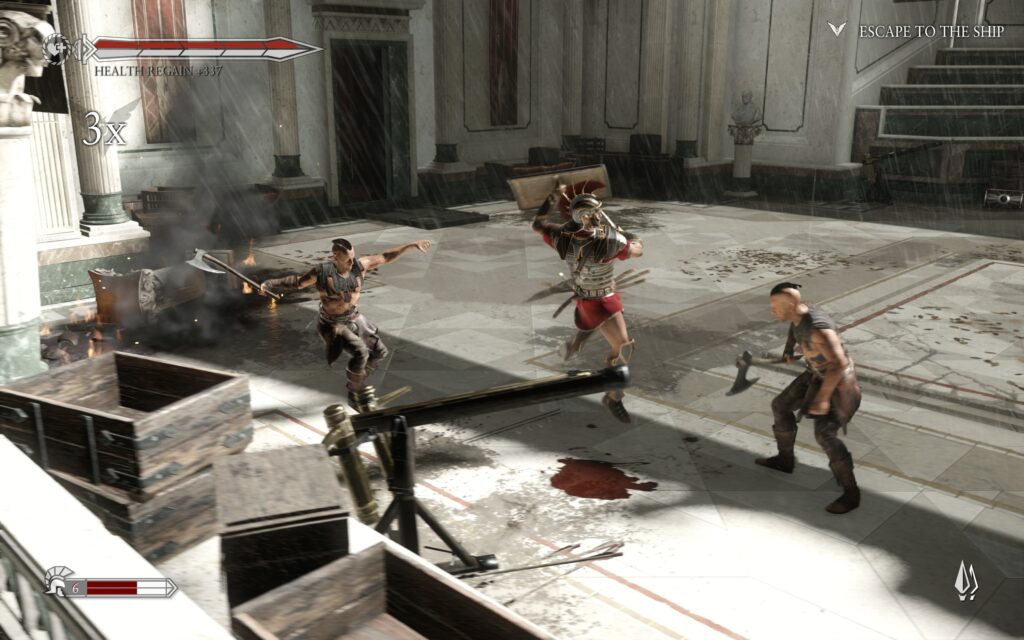
In other sequences you are asked to position archers or troops before a fight. Positioning them in various positions can give you certain advantages and disadvantages, which are explained clearly up front. Do you have the archers and troops support eachother, leaving you to defend a position alone, or do you have the archers support you, risking the lives of your troops?
The characters are well voice-acted, and you will end up loving and hating characters as the narrative progresses. The relationship between Marius and Vitallion, his superior, is poignant. They are both shown to be heroic soldiers, caring about eachother, their men, and Rome.
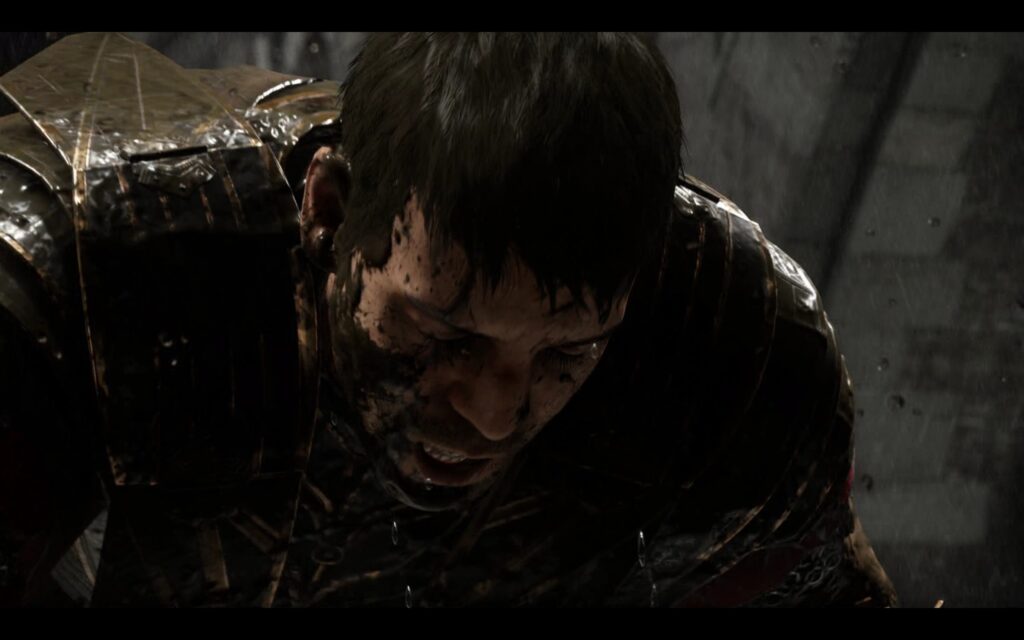
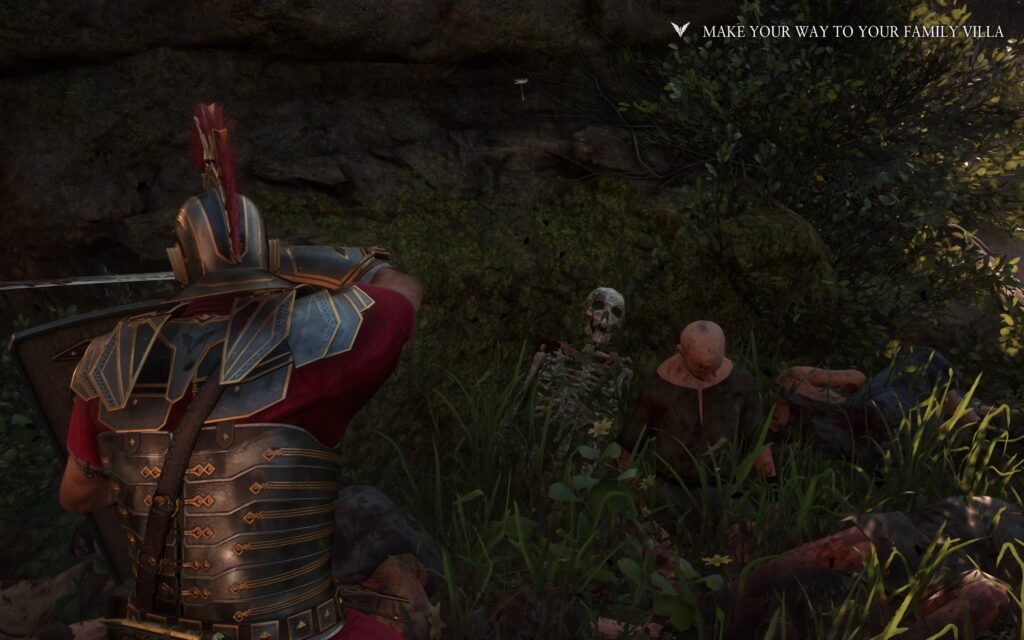
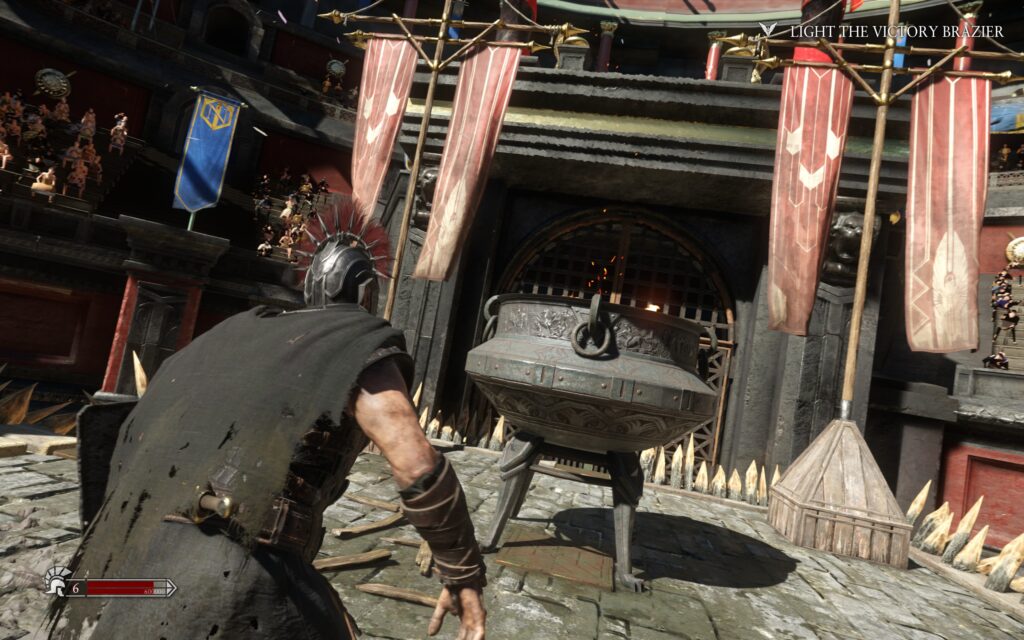
Nero and his sons, Commodus and Bassillius, are deplorable and easy to hate. The sons especially, are spoilt brats who deserve their fate, and it is satisfying when you finally get to deliver it to them.
The barbarians of Britannia feel genuinely terrifying. The Roman Army is powerful, but the game really makes you feel like the native Britons are a genuine threat to Rome. Even after you have gotten used to fighting them, and they are “defeated”, you still fear them.
The story culminates in a well-earned conclusion where our hero saves Rome from both the barbarians and itself. It’s a ride I couldn’t get off, and in the end I was glad I got to enjoy it.
Judgement
Despite these flaws, I found Ryse to be an extremely fun experience overall. The voice acting is great, making you real feel for the characters in the game. The combat is mostly exciting, with only a few areas of frustration. But nothing beats that feeling of fighting your way through to the enemy general through hordes of troops and somehow still managing to take them out.
Once the story is over, the game offers a multiplayer mode. In this mode you can join another gladiator as you fight through a scenario in the Great Colosseum. There aren’t many people still playing, unfortunately, but you can still play it in single player mode. However, multiplayer games only need two people to play, so you only need to convince one friend to join you.
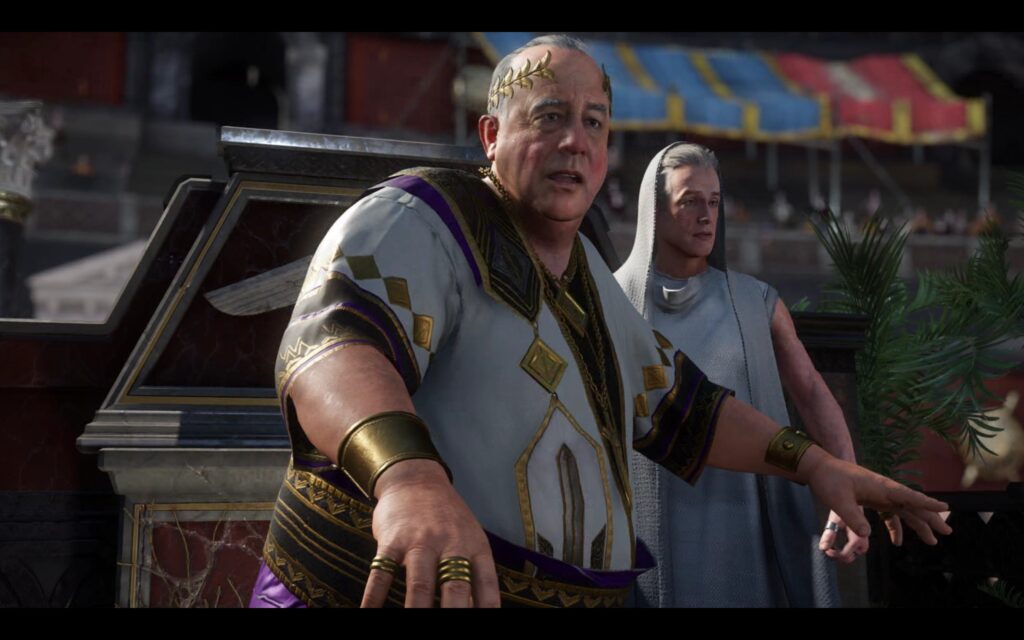
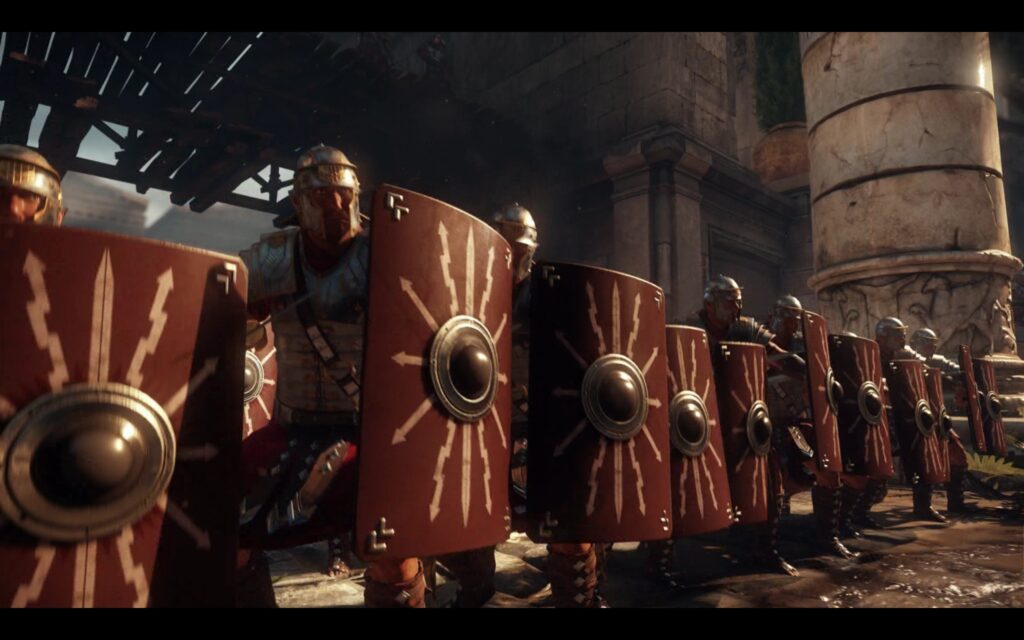
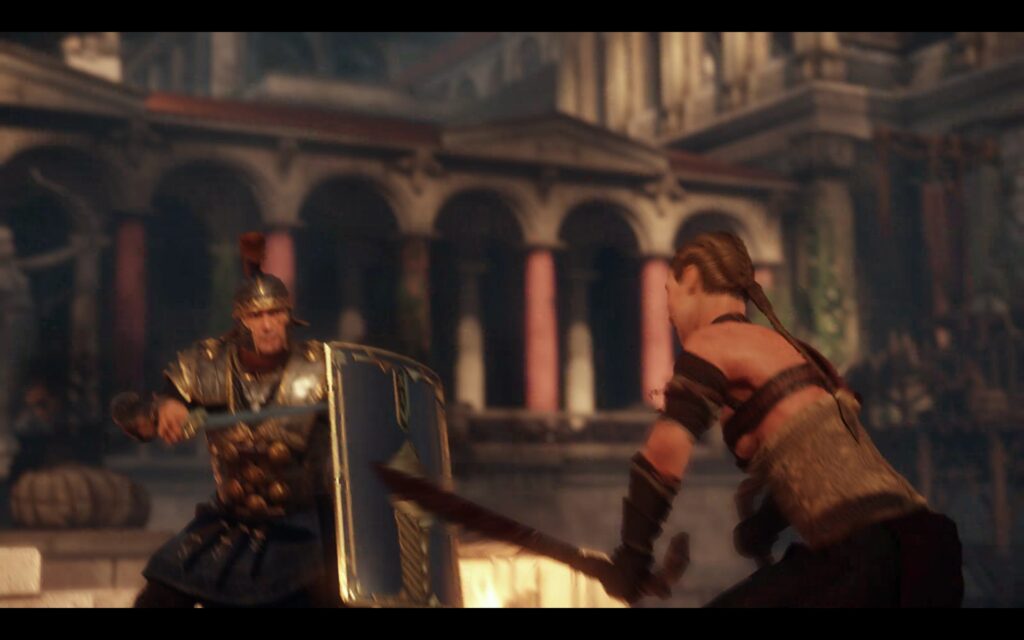
The multiplayer lacks the story and excitement of the campaign, but it still gives you challenging fights and scenarios, and new environments to explore as you battle your way against AI opponents. When you die, you die, making this part of the game the most challenging, but also a good way to extend the game beyond the campaign. Even playing solo, this brings a few extra scenarios and challenges for players to complete.
For completionists there are also collectibles scattered throughout the campaign, giving players a reason to replay if they want to uncover more in this game.
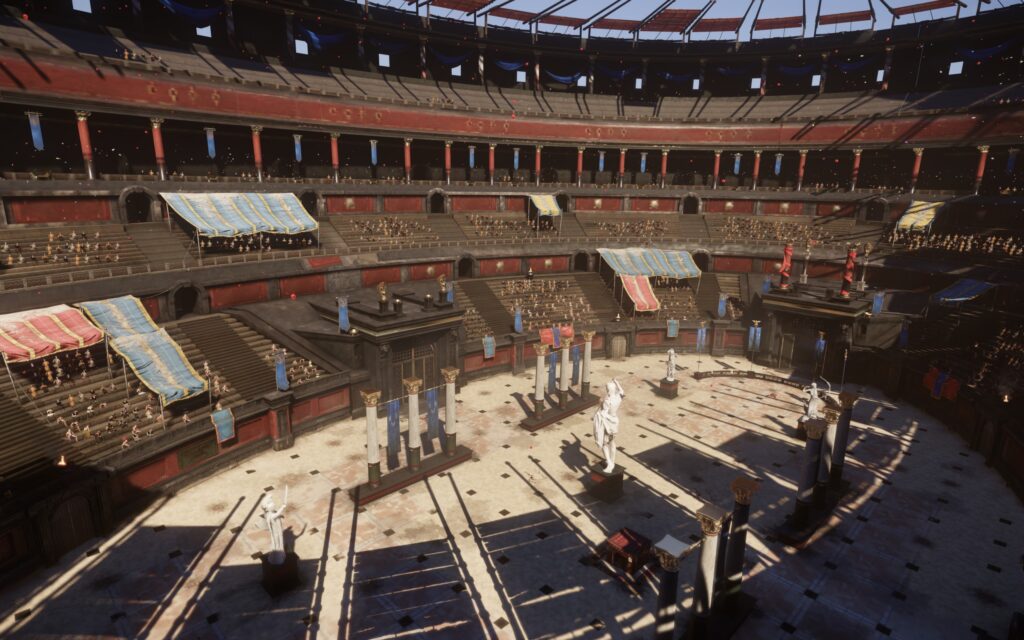
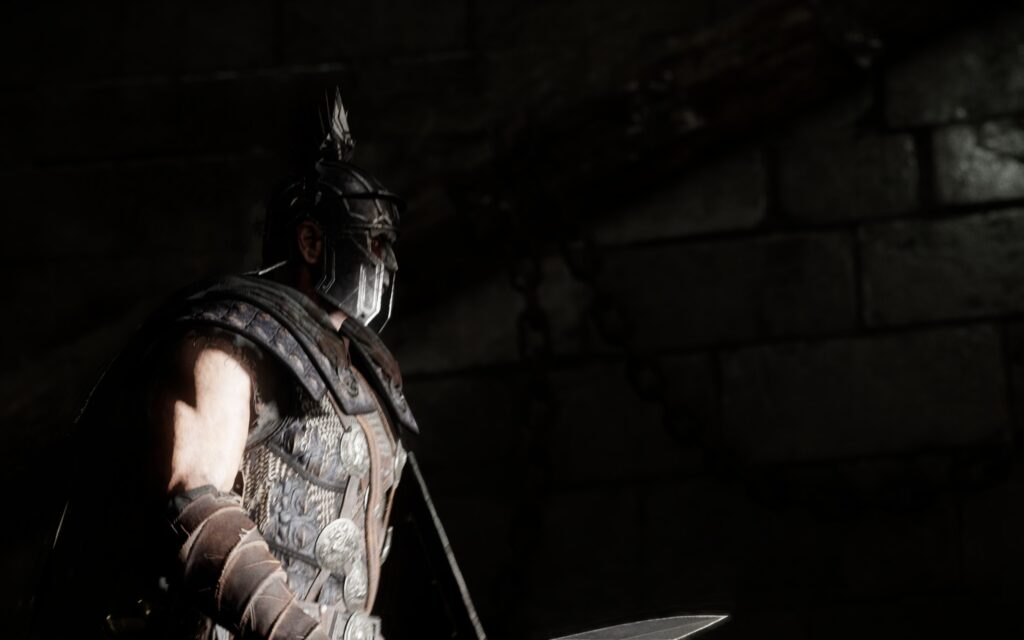
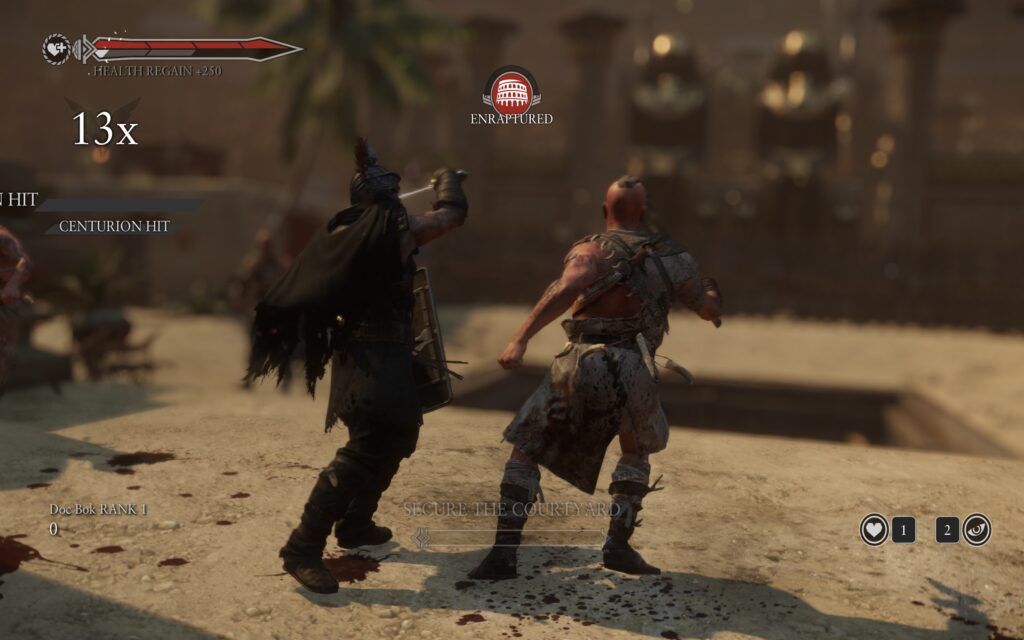
For a short but cinematic journey through Rome, Ryse delivers. It may not revolutionise combat, but it makes you feel like a Roman soldier, and that’s an achievement in itself. As someone new to this style of combat game, I found Ryse both accessible and rewarding.
While veterans of the genre might find its mechanics straightforward, it was a fantastic introduction for me. I always thought these kinds of games were button mashers with no challenge, and Ryse has shown me that I am wrong about that. I look forward to trying out more games of this kind in the future.





One thought on “Revenge: A Story Told in Blood”
Comments are closed.